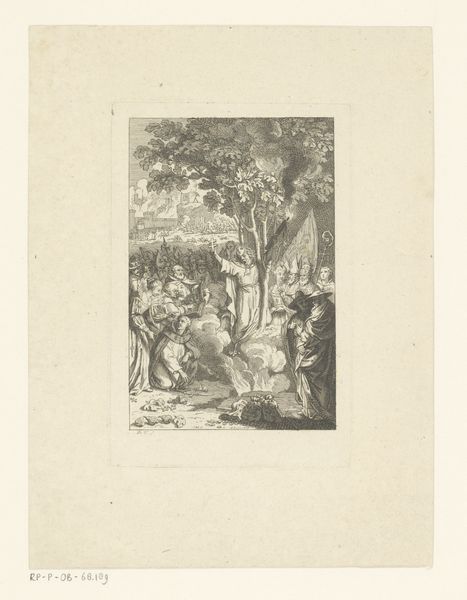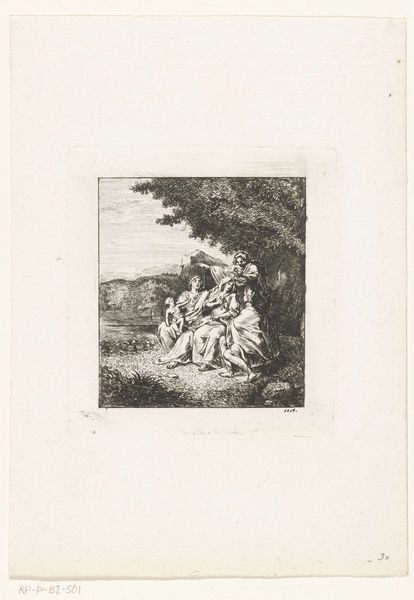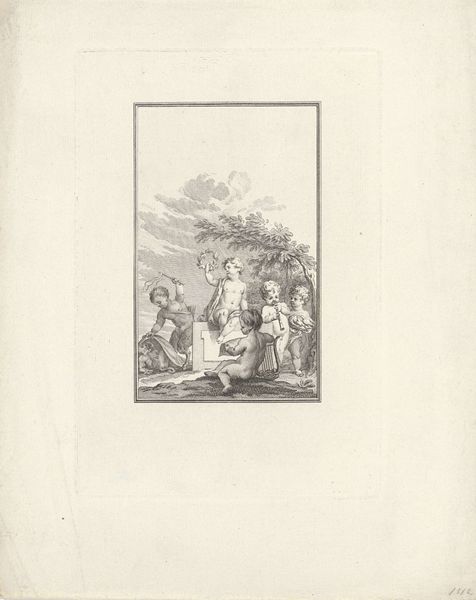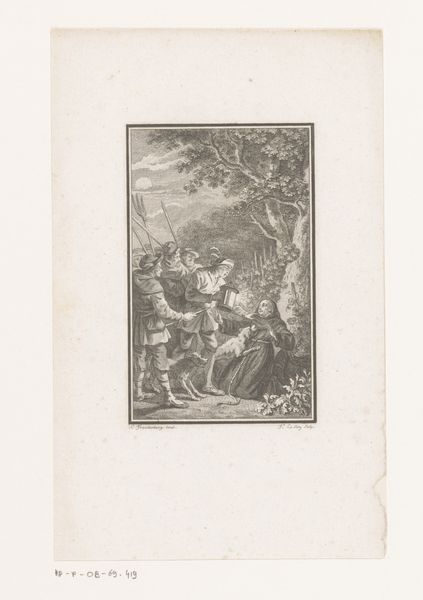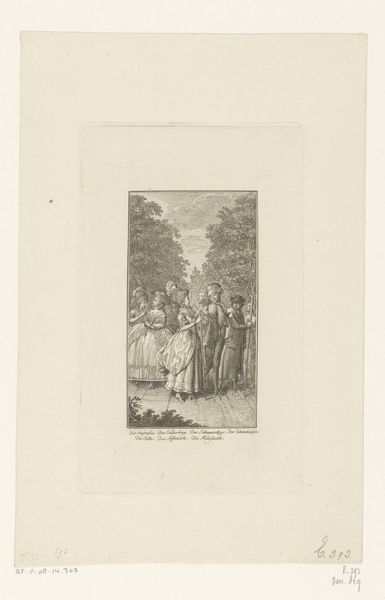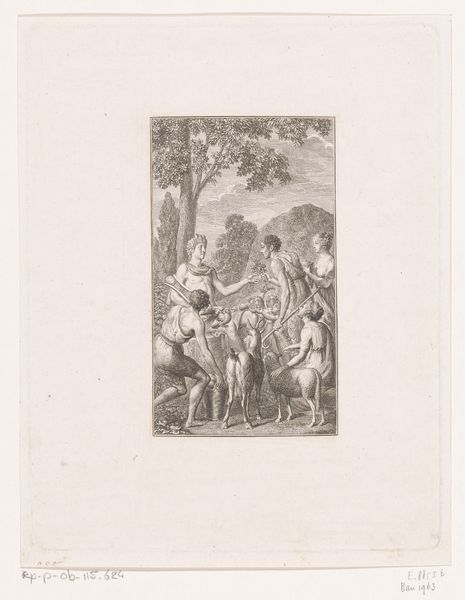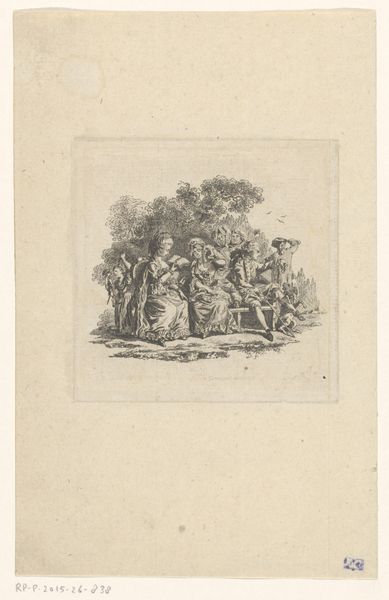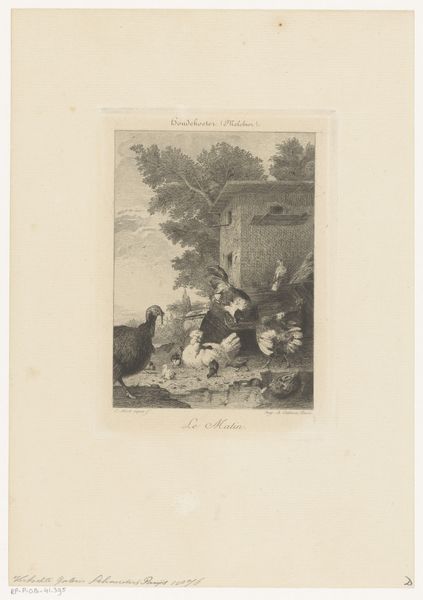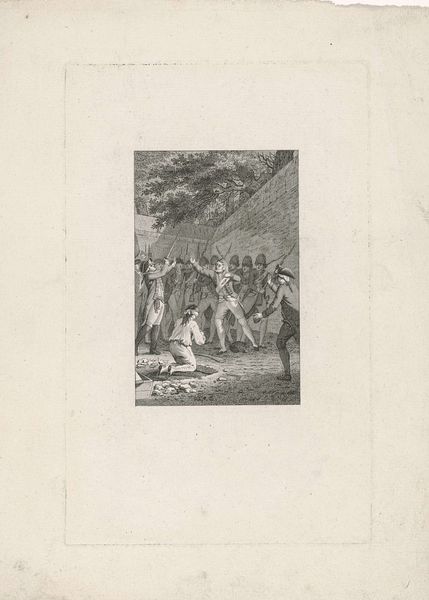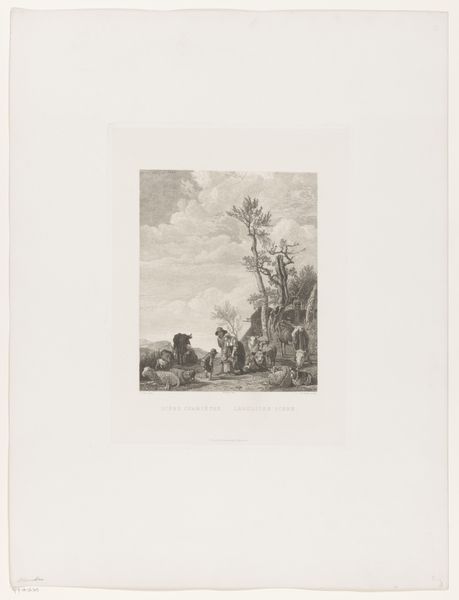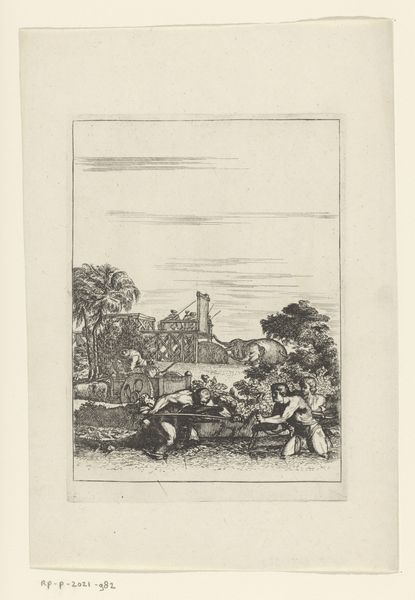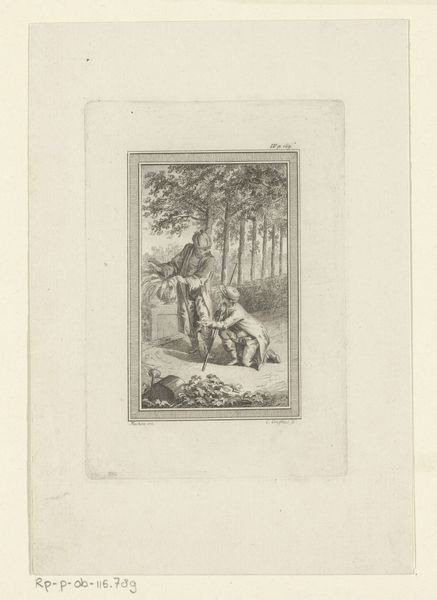
Joachim Heinrich Campe met zijn familie onder een boom 1779
0:00
0:00
danielnikolauschodowiecki
Rijksmuseum
Dimensions: height 184 mm, width 121 mm
Copyright: Rijks Museum: Open Domain
Editor: So, this is "Joachim Heinrich Campe met zijn familie onder een boom" made in 1779 by Daniel Nikolaus Chodowiecki. It’s an ink engraving printed on paper, currently at the Rijksmuseum. There is an incredible stillness to the family under the tree; almost as if they're posing. How do you interpret this work, especially considering the context of family portraiture in that era? Curator: It's fascinating how Chodowiecki uses this seemingly idyllic family scene to engage with Enlightenment ideals surrounding education and domesticity. Campe, depicted here, was a prominent figure in the Philanthropin movement. This movement advocated for educational reforms rooted in reason and individual liberty. Doesn’t this family setting, almost performative in its tranquility, subtly promote Campe's progressive ideas about family as a cornerstone of societal reform? Editor: I hadn’t considered the educational reform angle! That's so interesting, I was focused on the quietness of it all. Are you saying that even this choice to depict such calm is a conscious statement about societal change? Curator: Precisely! Consider how images of families were typically deployed then – usually, stiff, formal affairs representing social status. Here, Chodowiecki presents a family at ease in nature. The engraving itself, as a widely reproducible medium, democratizes access to this image. Is the artist subtly suggesting that these enlightened values and Campe’s philosophies are meant for widespread adoption? Editor: It's incredible to think how this quiet scene becomes charged with political and social commentary once you consider the context. It really reframes the entire work! Curator: Absolutely. The image then acts as a gentle nudge toward reconsidering the power dynamics of family and the potential for education to shape a more enlightened society. We see how artistic expression is deeply intertwined with the sociopolitical currents of its time, subtly challenging dominant norms. Editor: I learned that family portraits are so much more than what they appear to be, even down to their stylistic qualities. Thanks for highlighting the engraving as an object to democratization and showing me this intersection of domesticity, enlightenment ideals and politics. Curator: Indeed! Considering art through the lens of these intersectional narratives reveals layers of meaning often overlooked at first glance. This is one way in which historical figures can join our present cultural discourse and we continue to ask questions!
Comments
No comments
Be the first to comment and join the conversation on the ultimate creative platform.
